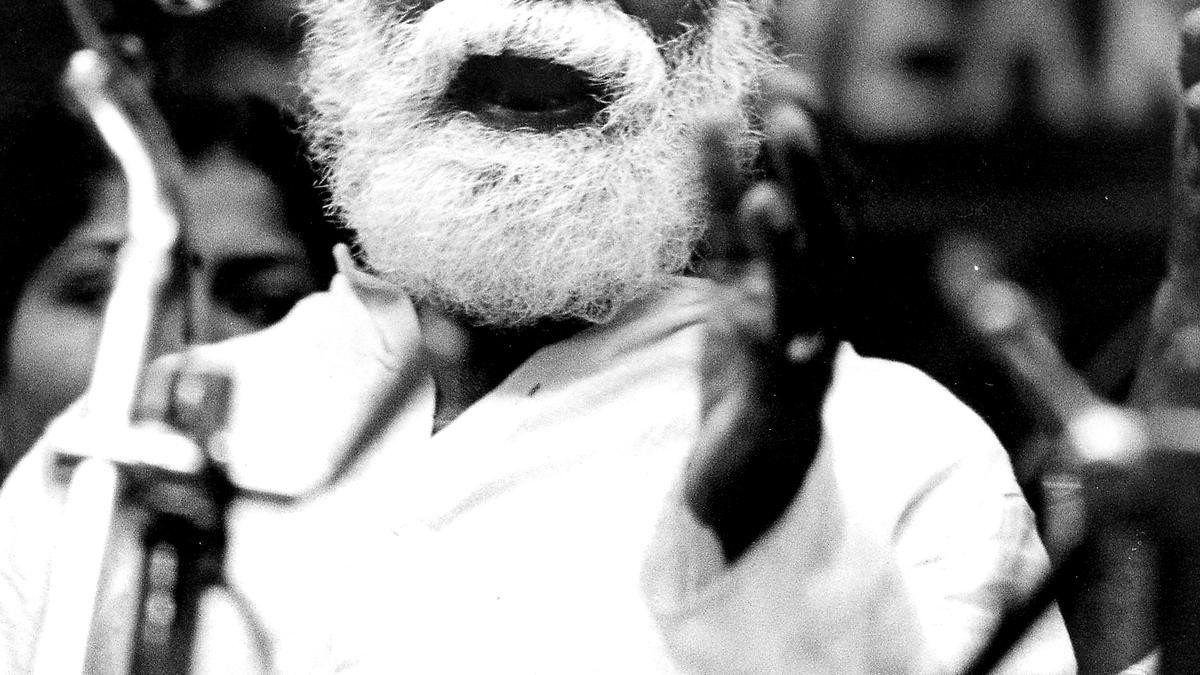By identifying young talents early on and fostering their abilities within group settings, S. Ramanathan embraced the Suzuki educational approach, which produced notable practitioners of diverse styles in Carnatic music, as revealed by the late musician’s granddaughter and vocalist, S. Sucharithra. Sucharithra, during her enlightening two-hour discourse titled ‘A Day with Dr. S. Ramanathan’ at Ragasudha Hall on April 6 under the auspices of Parivardhini, highlighted how Ramanathan allowed his students to select their lesson times based on a first-come-first-serve basis at his residence in Chennai, illustrating a classic example of cultivating an optimal learning atmosphere.
Ramanathan (1917-1988) maintained an inclusive teaching approach, devoid of separate slots for seniors, juniors, or beginners among his disciples. He eschewed the practice of notation during the instruction of ragas or compositions, emphasizing the significance of the oral tradition in Carnatic music. These principles underscored his commitment to the Talent Education system advocated by Japanese violinist Shinichi Suzuki (1898-1998), which advocated for the education of individuals at all skill levels, the promotion of peer interactions, and regular music listening habits.
The typical day at Ramanathan’s humble abode commenced with the first teaching session at 6:30 a.m., catering to a group of eight to ten students. Following this session, a two-hour training block would conclude at 10 a.m., succeeded by veena lessons, showcasing his versatile expertise. Subsequently, evening and nocturnal classes would ensue, complementing his home tutoring responsibilities with lectures at esteemed institutions like Kalakshetra and Kalapeetham, as reminisced by Sucharithra.
Ramanathan’s daily routine typically commenced at 5 a.m. with violin practice, accompanied by the playful presence of children in the room, a sight that never perturbed the patriarch. Despite the scorching noon sun, Ramanathan would embark on his daily walk, returning to tend to household chores without a single complaint about the weather. Meals were simple and nutritious, devoid of extravagance. Afternoons were dedicated to scholarly pursuits and academic readings.
Sucharithra fondly recalls Ramanathan’s remarkable memory for books, citing his ability to address queries by pinpointing specific pages and draw insightful conclusions by connecting fragments of knowledge. Upon relocating to Chennai in the mid-1970s post his tenure with Sathguru Sangeetha Samajam in Madurai, Ramanathan brought with him a treasure trove of books, showcasing his perpetual fascination with music across genres, not limited to Carnatic music. Known for his humility, kindness, and accessibility, Ramanathan refrained from engaging in gossip or belittling fellow musicians.
During the Margazhi festivals, Ramanathan’s schedule was packed, encompassing not only sabha concerts but also a keen interest in promoting the bhajana sampradaya, actively participating in unchavritti in the mada veedhis around the Kapaleeshwarar temple in Mylapore. His curiosity extended to pre-Tyagaraja compositions, exploring the works of Bhadrachalam Ramadas, Annamacharya, and Purandara Dasa, among others. While reviving traditional kavadichinthu compositions, he also harmonized compositions by contemporaries like Ambujam Krishna and Tulasivanam Ramachandran Nair. Renowned for his clear vocals and preference for unembellished notes, Ramanathan’s singing, as praised by violinist M. Chandrasekharan, maintained a perfect balance without unnecessary flourishes. Sucharithra further elucidated on Ramanathan’s musical prowess by playing excerpts from his recordings, although his doctoral studies at Wesleyan University in the United States were not explicitly mentioned in the narrative.
